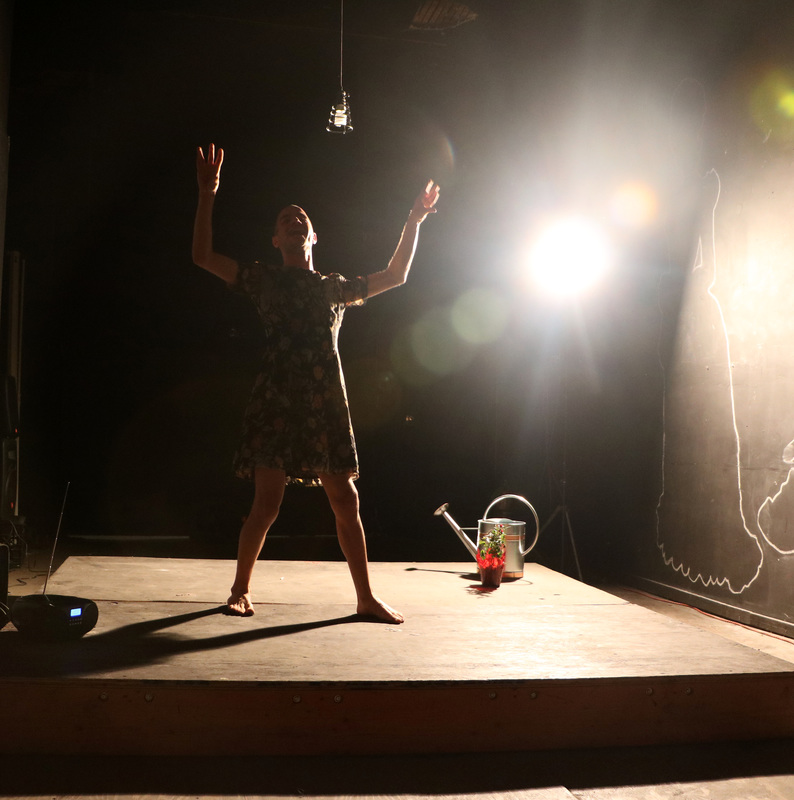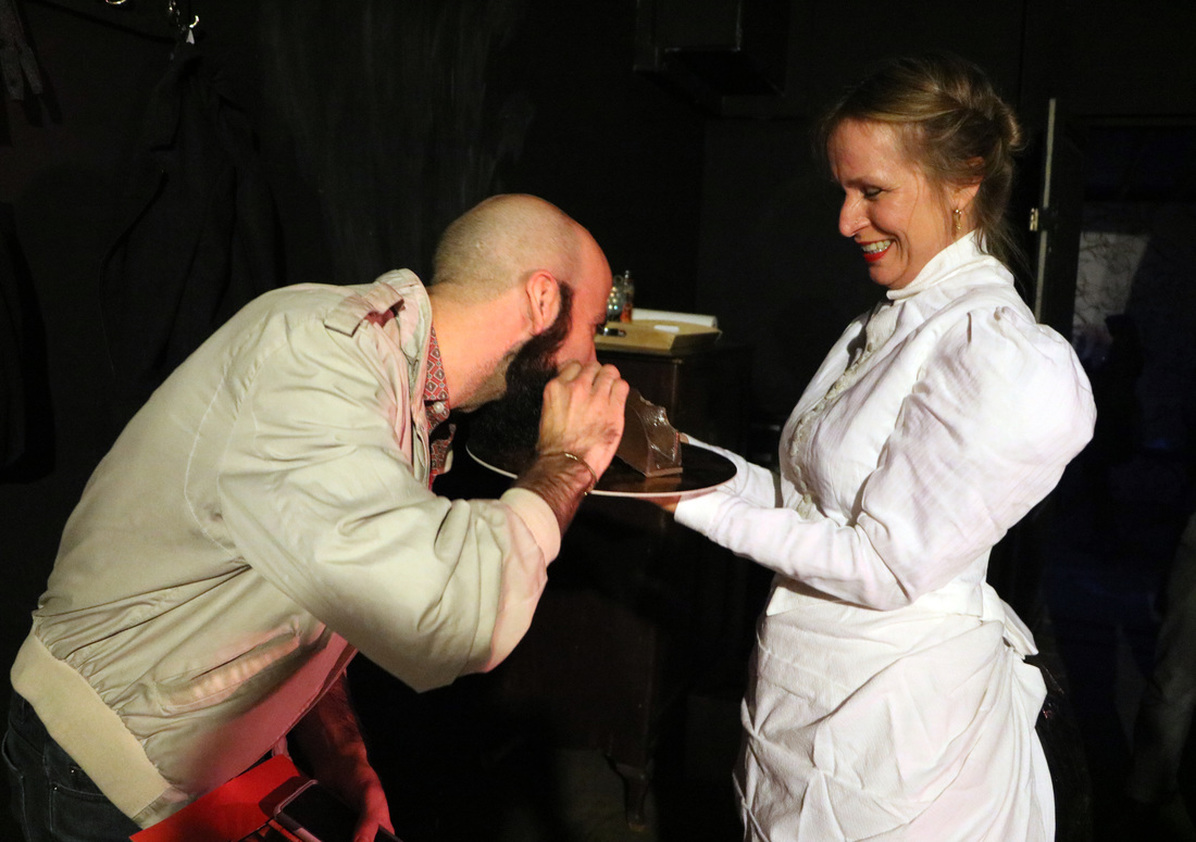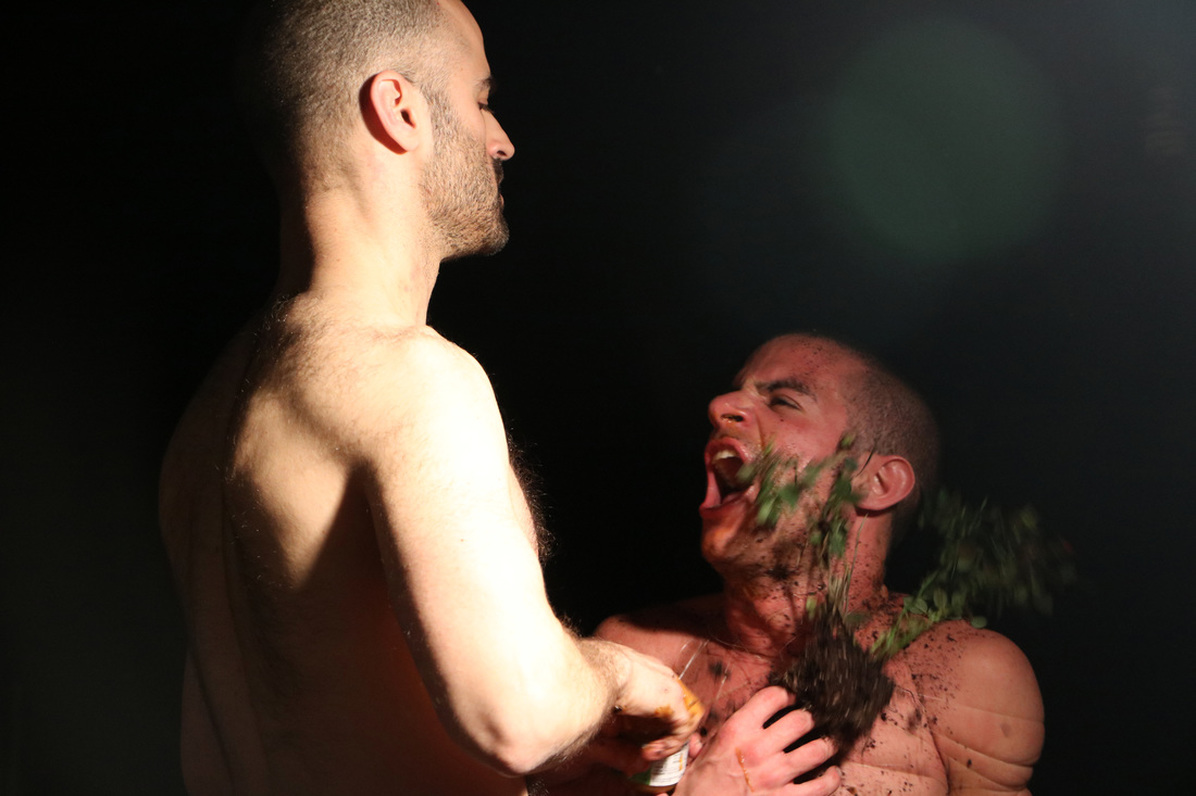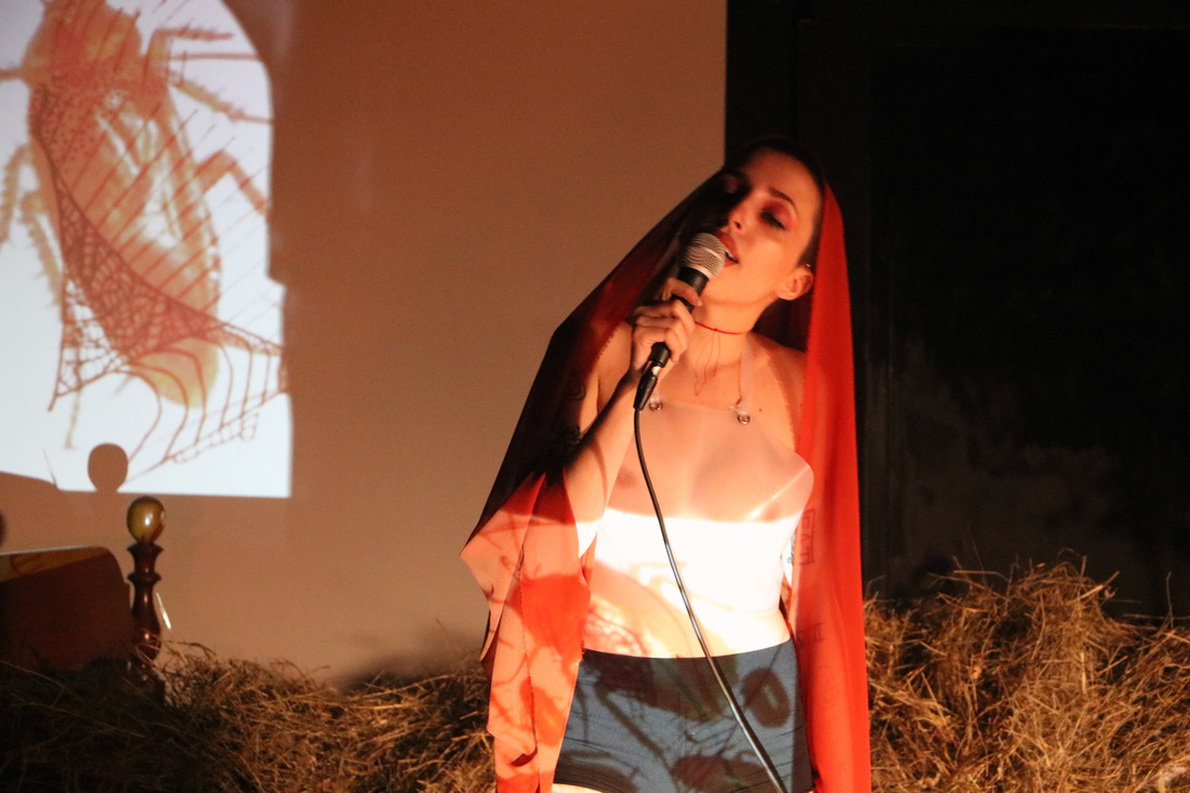|
REVIEW: THE SICK ROSE AT PULSAR - CLAPPING, PROPS AND CONTEXT By Quinn Dukes PULSAR is the performance programming brainchild of Ian DeLeón and Tif Robinette (Agrofemme). Monthly PULSAR events run out of a black box space adjacent to the Catland Bookstore on Flushing Avenue in Bushwick, Brooklyn. The spirit and bounty of performance art in Brooklyn is explosive right now. I have been invited to more events in the past month than all of 2010 combined. It’s staggering, wonderful and allows for experimentation. Performance artists present their work on rooftops, restaurants, lofts, galleries… you name it. These events are often followed by late night parties, occasional fires and electoral candidate bash sessions. What does not seem to be following the same path of enthusiasm however is the shared dialogue, critique and conversation about the performances. All too often, an artist performs, a 5-10 minute break happens and then we (the audience) are thrust into the narratives of a new artist. This practice is not at all uncommon. Live music venues stack the bill, as do comedy shows… but I wonder, how does the abundance of viewership without analysis or conversation alter the effectiveness or memory/remembrance of the work? If the performance reaches me on an emotional and/or visceral level- I am more likely to recall it - but this is merely a function of our neurological mapping. (Richard Sieb, “The Emergence of Emotions,” Activitas Nervosa Superior, 2013) Initiated in February 2016, PULSAR was birthed out of an interest to integrate live artists - linking practitioners of sound, dance, experimental theatre, choreography, performance and beyond. Curators DeLeón and Robinette seek to initiate conversations about the performances presented at PULSAR and the place of performance within our current socio-political environment. In collaboration with INCIDENT Magazine’s David LaGaccia, DeLeón and Robinette began publishing a podcast to share (and archive) discussions related to PULSAR performance programming. On the evening of May 20th, my first PULSAR experience began from across the street of the venue. I watched as a woman dressed in a Victorian white costume presented an offering to passersby. As I drew closer, performance artist Charmaine Wheatley asked me, "Do you want to take a bite." I looked down at the object presented on a silver platter and was informed that it was a dark chocolate mold of her ass. I asked, “Okay, what kind of chocolate is it?” She listed off a few unknown (probably gourmet) names to which I then asked, “Is there milk in it?” She replied, “No, I don’t think so.” I took a bite. We laughed. I took another bite. She thanked me and that was the extent of my interaction. When I entered the gallery, I saw several other chocolate molds with viewer gnaw bites. I asked myself, why did this white woman decide to present a portion of her ass in dark chocolate? Why not white chocolate? I wasn’t provided any further information about the piece so my experience became exclusively about the chocolate's taste and ingredients. Was that the point? Based on the large-scale female Victorian silhouettes drawn on the wall and Wheatley’s elaborate costume, I’m confident that her intentions are much deeper but unfortunately, I couldn’t get there. Rudi Salpietra performed next. At the instruction of Ian DeLeón, I stood on my tiptoes for as long as I could. I’m not quite sure why Salpietra posed this viewer prompt. My calves ached and this work was not about the calf - but I suppose I can draw parallels to endurance. Salpietra’s work was a challenging exploration of identity repression. Throughout the performance, Salpietra attempted to adhere to his exuberant choreography while two men (Honey McMoney + Butch Merigoni) aggressively restricted his movements. Salpeitra was wrapped in mono-filament and tape and later force fed baby food. The work ended with Salpietra being towed off by this feet while a single spotlight illuminated a Charley Chimp. The performance was difficult to watch. A few minutes later, Salpietra returned to the performance space as his natural, bouncy self - took a bow and cleaned up the space. The audience applauded and the next round of performers entered. I would like to pause here to ask- Why do audience members feel compelled to clap after bearing witness to intensely emotional, invasive and vulnerable work? Yes, Salpietra presented a strong work… but to clap? That was not my first response and I beg all viewers to consider whether this is the most authentic response. Performers, how does it feel to receive applause following an emotionally raw performance? 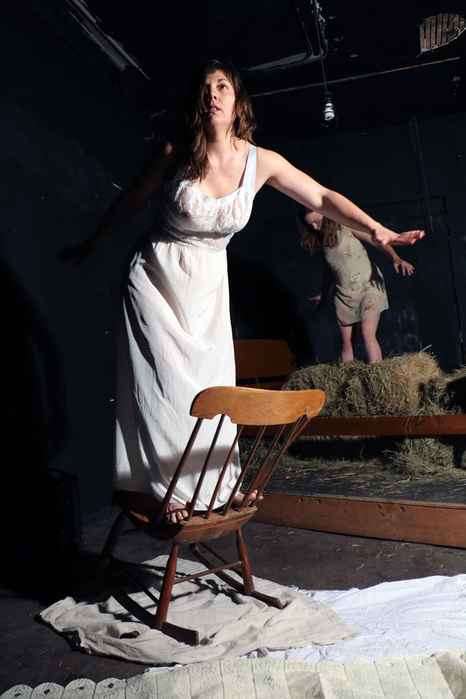 Rae Goodwin and Mairead Delaney | PULSAR: The Sick Rose | May 20, 2016 | Image courtesy of PULSAR Rae Goodwin and Mairead Delaney | PULSAR: The Sick Rose | May 20, 2016 | Image courtesy of PULSAR Rae Goodwin and Mairead Delaney instantly transformed the exhibition space by setting up a wooden bed frame, a wooden rocking chair and 6-8 hay barrels. Seeing the hay instantly recalled memories of living in the south and hitching a ride on the back of my grandfather’s tractor. Goodwin and Delaney’s materials were so foreign to Bushwick’s industrial landscape that at once - I was transported into their alternate world. The performance primarily focused on Goodwin as she pushed the physical limitations of herself and the antique rocking chair. We watched as Goodwin’s strength and balance slowly faltered. Eventually the repetition of imbalance formed breaks in the chair’s weak wooden joints. Following each fall or break, Goodwin approached Delaney and the two sirened bells in unison. The bell hums reminded me of a UFC match only this was a fight between woman and object, woman and self and possibly woman and memory. Once the rocking chair was successfully broken, the space went dark and the performance was over. The sudden darkness created a rare and beautiful silence across the room (which was, yes, interrupted by applause). Lastly, Mothernight performed. A small video projection rotated images of cockroaches and text while Mothernight poured velvety lyrics toward a circle of black candles and a cow-skull. The songs were performed in a fluid sequence touching on deep emotional questions of love and identity. I found myself distracted by the visuals projected by Mothernight. As an escape from the insect projections, I turned my attention to the flowing red cape as it fluttered dangerously close to the black candle flame. Fortunately, no garments caught fire but I question the need for extraneous objects when the real emphasis (and success) here was the harrowing serenade of Mothernight’s voice. And so the questions at hand…
Aside from applause, are there other appropriate forms of recognition that viewers can adapt following a performance? How do we, as witnesses of performance/live art engage and cultivate continued conversations about the medium? When is contextual information surrounding a performance necessary? Please, let's discuss. Also, special thanks to PULSAR for organizing the performance events and facilitating a place for performance conversation!
1 Comment
|
CONTRIBUTORSIan Deleón Archives
July 2023
|
|
MISSION // Based in Brooklyn, NYC, PERFORMANCE IS ALIVE is an online platform featuring the work and words of current performance art practitioners. Through interviews, reviews, artists features, sponsorship and curatorial projects, we aim to support the performance community while offering an access point to the performance curious.
Performance Is Alive is a fiscally sponsored project of Fractured Atlas, a 501(c)(3) charity. Contributions made payable to Fractured Atlas for the purposes of Performance Is Alive are tax-deductible to the extent permitted by law. |
